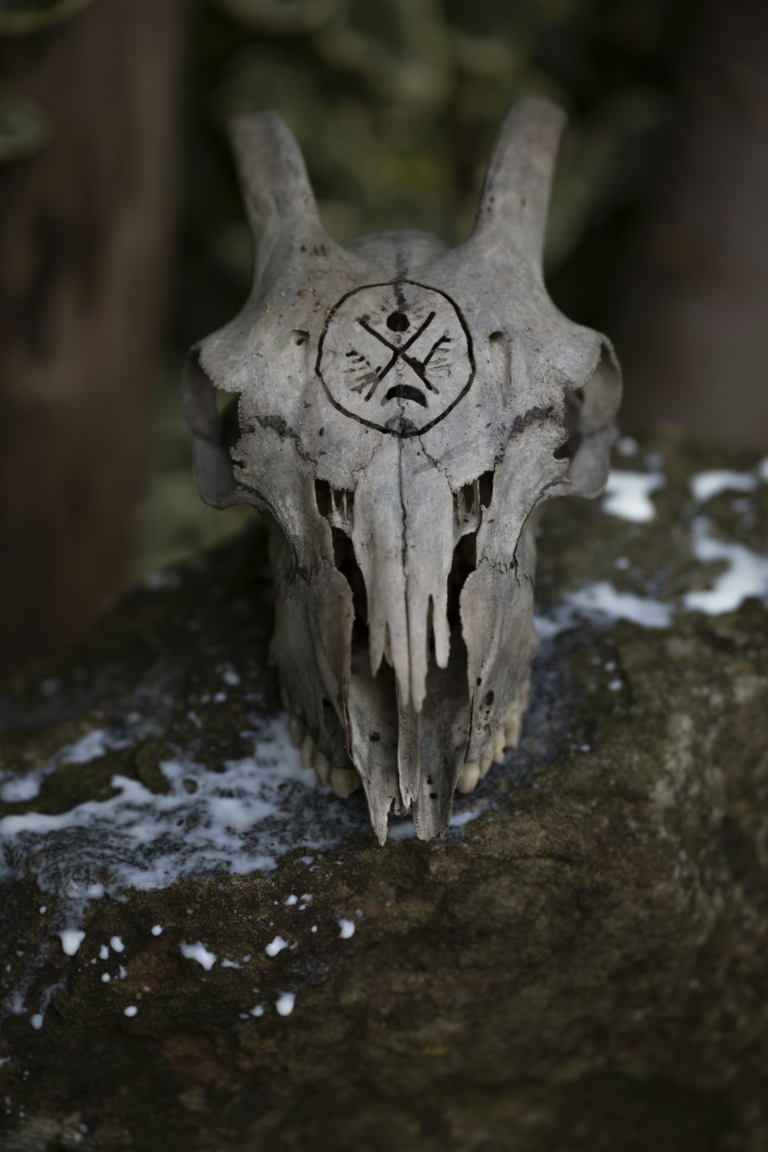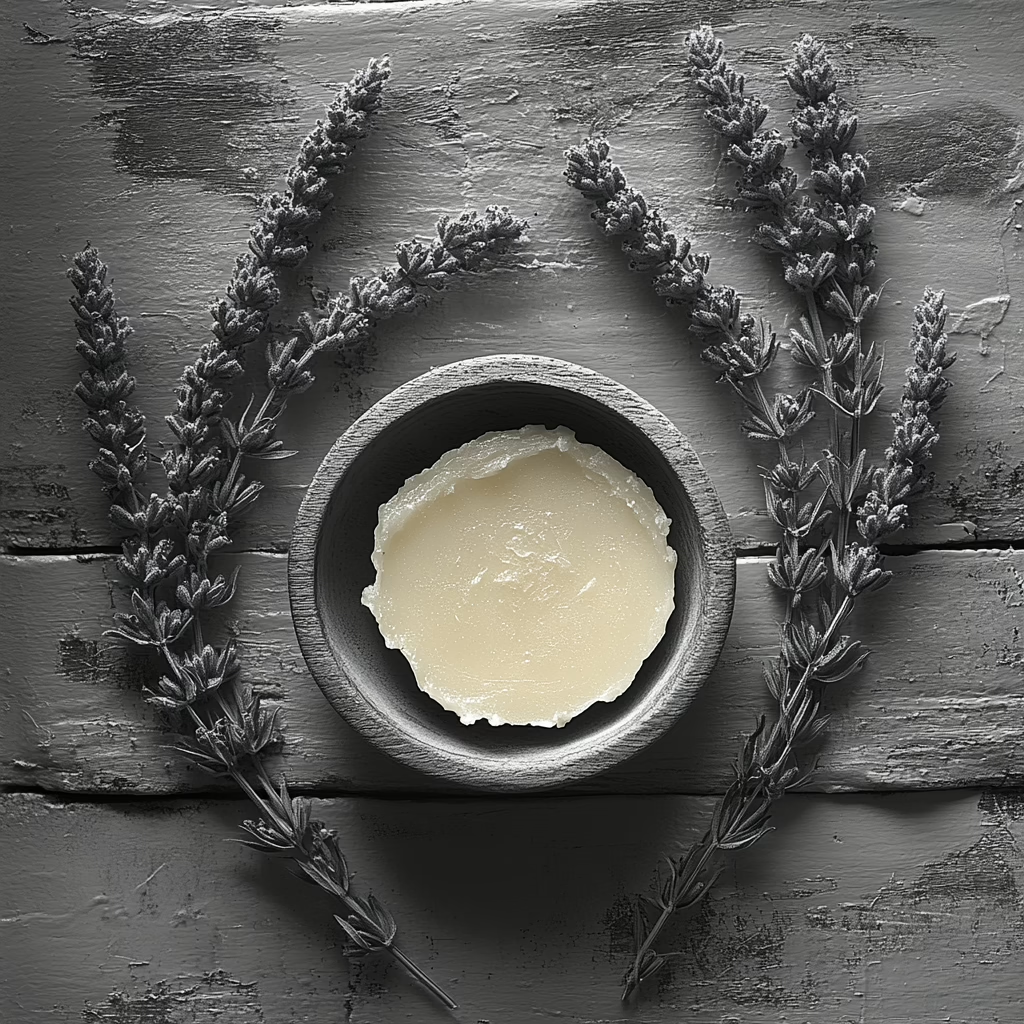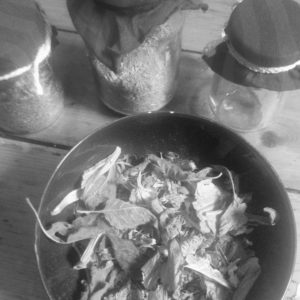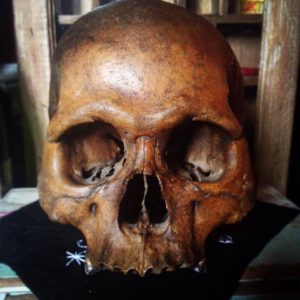
Newsletter Subscribe
Enter your email address below and subscribe to our newsletter

Enter your email address below and subscribe to our newsletter


Exploring Scottish Folk Practices and Traditions

Our bones that we have on display need as much care as the bones in your body but in a different way. For this is I have created what I’m terming a Bone Balm, and this blog looks at how it is made, the ingredients that are part of it and how to apply the balm for best care.
Dem bones, dem bones, dem dry bones … herbal bone balm for bone ornament care.
The weather sure is hot, even for Scotland, the cats are drinking more water than usual and shedding all their hair everywhere and its been “taps-aaf” weather for while! We also have a large selection of bones in our house; from birds, to goats, to bats, to humans and we get much enjoyment from them, but i guess their feeling the heat too. This unusually hot weather we have been having has gotten me thinking about the care of the bones in our house. We all get thirsty and so do the bones and wood in our house loose moisture and dry out too but it’s not like they can reach for a glass of water… This heat can cause them to crack and chip and degrade and become brittle.
We need to care for bone ornaments as much as you would the bones in your body but in a different way. For this is I have formulated, what I’m terming a Herbal Bone Balm.
Addendum: this is a bone balm, not a salve, as it’s slightly softer to apply and rubs in easier. The difference between a salve and a balm is the addition of a soft fat, in this case animal fat but feel free to leave it out if you want a very hard wax or polish. Agina this difference is hotly debated and people use these two terms interchangeably.

The infused oil was made with Mortification Root, White Lilly flowers, Golds flowers, leaves from the Herb of Grace, leaves of the Green Ginger, and Devils Cherry leaves infused in wheat germ oil over 4 weeks, a lunar cycle. You could use the animal fat directly without the infused oil and infuse the ingredients in the tallow.
The symbolism of the plants infused in the oil are specific to my own praxis some of these plants have a chthonic correspondence, others help to remove unwanted influences from the environment and others aid in the communication with ancestors. You can substitute any you feel may be of relevance to you in here, it matters only that they are important to how you operate.
Addendum: Some of these plants have a poisonous effect if ingested. If you are to follow the recipe please make sure you don’t eat any. It’s relatively harmless when applied to the skin but to be extra sure it might be best to wear gloves. If you have an allergy to morphine please do make sure you wear gloves at all times when handling the product and polishing your bones with it. Please make sure you clean everything throughly if you use it to eat or make other herbal preparations with.
The use of cedar oil in the final balm is added because it has been apparently used in the preservation of the heads gathered in battle from Celt’s. (Evidence for this has been found in archeological finds I believe but can’t currently find the reference). It’s deep red colour also holds significance when feeding the bones.
Bees also have a chthonic correspondence to me and the inclusion of bees-wax is a very welcome one you can however use e-wax if you prefer.
Felon herb aids in the communication and divination practices that someone might want to use the bones for and also smells really good!

Weigh or measure out the wax (preferably grated or cut into small pieces) and the herbal infused oil and place both of these in a double boiler or bain marie. Heat over a low heat until the wax is fully melted and then stir well.
You may, at this point, wish to add other liquid components, such as red wine or, er, other red liquids. Up to 10ml would be more than enough, anymore and you may end up making the finished formulation too soft. Also be aware with the addition of a liquid phase the product will go off a lot quicker. If adding, drizzle it in slowly (like making mayonnaise) whilst whisking lightly with a fork. The beeswax will act as an emulsifier and combine the liquid into the oil. Please whisk a lot until this has happened you may see a slight change in colour occurring and it may go slightly opaque it will mean they are well combined and you wont get floating liquids as it sets.
Remove from the heat and allow to cool slightly but not set. You can test the consistency of the salve by dipping the tip of a stick into it. Such a small amount will set quickly and will show you how the finished product will be. If you are not happy you can return it to the heat and add a fraction more oil/wax until you get it just right, so start small (5g) with the beeswax. Whilst the salve is still liquid, stir in the essential oils, pour into glass jars and cap immediately to stop the volatile oils from evaporating.
Allow to cool and set completely before using.
Addendum: Some folk, depending on preference, may wish to add in red ochre (red iron oxide) into the mix. Please do this at the time you would add the liquids and only in small amounts and make sure that it is very finely ground as powders in the finished product may scratch your bones. You could also soak it in water and filter to maintain the red colour and then add as a liquid part. I don’t use this method as Iron and the Aes Sidhe in Celtic praxis do not mix and never the twain shall meet, but this might not be the case for you.
Take a small amount of the wax on a very soft cloth and gently work it into the bone in question. The heat from the friction will soften the wax and you’ll be able to work it into the bone. Apply as needed or until the desired shine has been created.
http://www.celticheritage.co.uk/articles_headcult.cfm I was not able to connect to this site from the USA, but may be your reference.
Sorry it should link. Perhaps the link is now out of date.